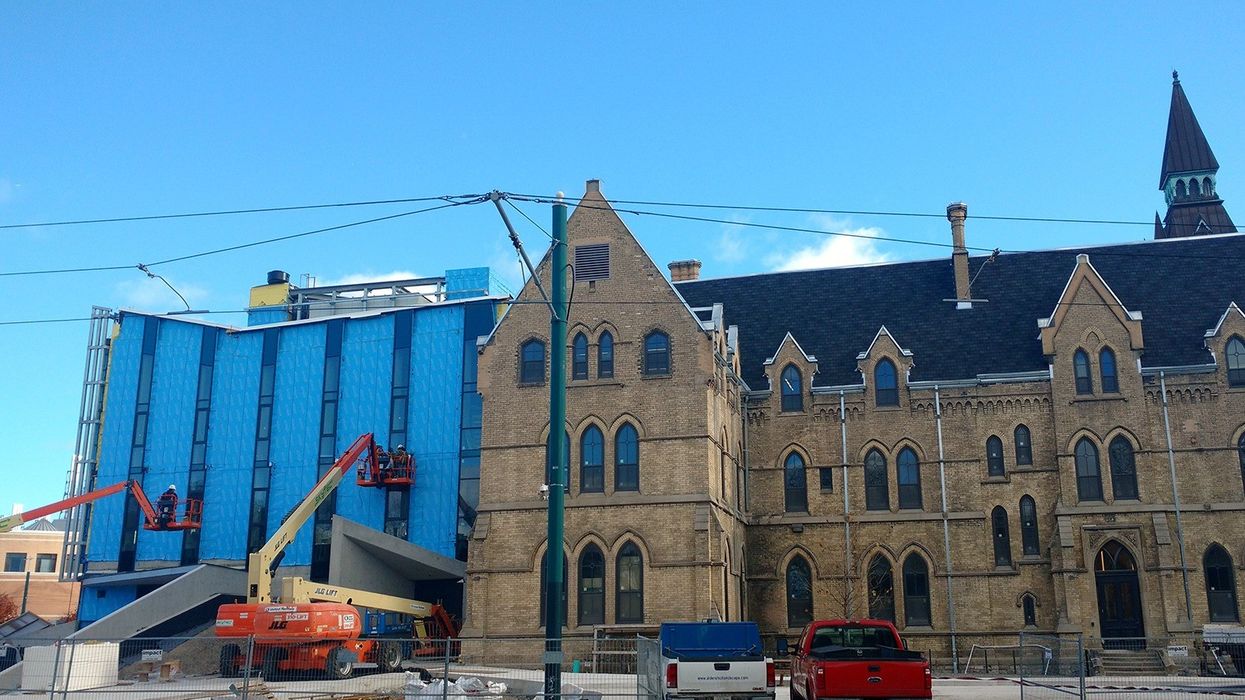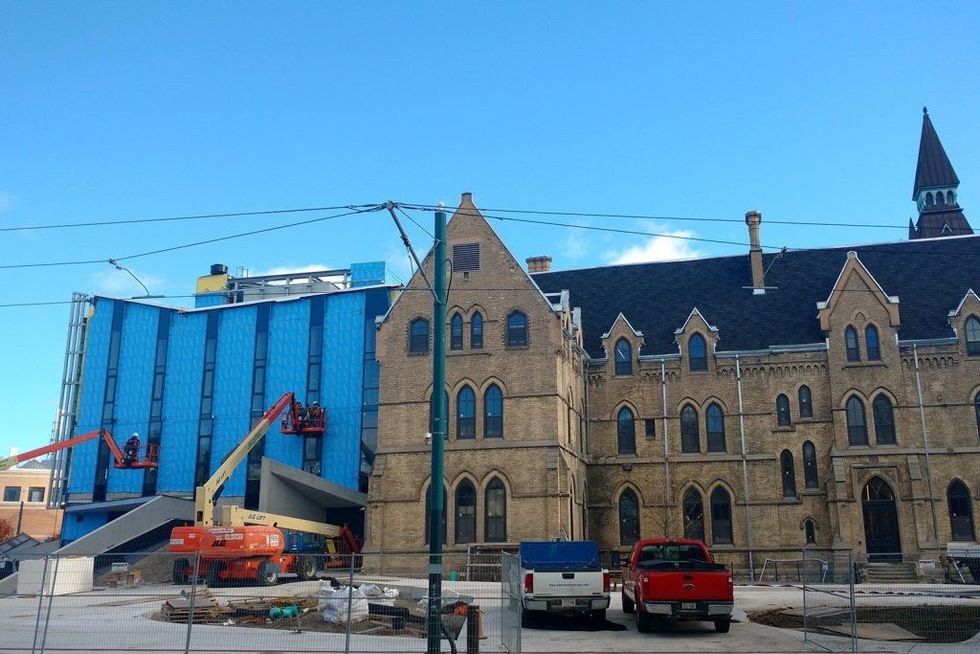Heritage preservation is as much about the ensuring the future as rescuing the past. But in Toronto, it exists in an eternal present — that place where it's always Groundhog Day and nothing matters except what's happening now.
Perhaps that has something to do with the blur of development that has remade this fast-growing city over the last few decades. Maybe it's the inevitable condition of a civic culture whose top priority is the bottom line.
Given our devotion to the market and the enshrined rights of property owners, who are we to say no to someone willing to invest money in this burg?
And yet, there's that tiny part of the civic conscience that wonders and worries whether we aren't allowing the destruction of something we can never get back, something that made Toronto so desirable in the first place, something irreplaceable.
Obviously, not every building can be saved. But where do we draw the line?
In Toronto, even the city's most iconic structures — Union Station and Old City Hall — have come shockingly close to destruction. Then one thinks of the unseemly haste with which Stollery's at Bloor and Yonge was reduced to rubble by thugs with steel poles. Or the bank in North Toronto that was disappeared early one Saturday morning while the neighbours, who though its future was secure, slept.
But as the great urbanist Jane Jacobs pointed out, the city is not a work of art. Neither is it a museum filled with artifacts too precious and brittle to be touched except by curators in white gloves, there to be gawked at and admired by the rest of us. Rather, the city is an ever-changing organism that must be allowed to grow and adapt or it will stagnate or die.
In other words, heritage is thorniest of issues.
Dealing with it demands creativity and commitment, as well as a whole lot of cash. Though both are in perennially short supply, it's the lack of imagination that stands out in Toronto.
Little wonder our default response to architectural conservation hasn't only become a cliché, it's grown decidedly irksome. We're talking, of course, about façadism, the lazy practice of demolishing every part of a historic building, but for a wall or two, left standing to become the exterior of yet another unloved glass-and-steel structure.
Even when intentions are good, it is an approach that compromises old and new, denying both the chance to be true to themselves.
When façadism does succeed, it's because what remains is more than a disconnected element ripped out of its original setting and abandoned to an indifferent, even hostile, context.
The Yonge Street frontage of Brookfield Place is instructive. What separates it from the ordinary is the retention of a whole block of 19th-century shop fronts. Though truncated, these marvellous façades, all fully restored, grab our attention and make it effortless for passers-by to ignore the desultory SOM-designed shadow-caster above.
On the other hand, adding a copy of the main façade of the Royal Canadian Military Institute to the condo tower that replaced on University Ave. is an example of the absurd lengths to which façadism can take us when an immovable bureaucracy meets an unstoppable developer. Though laughable, the results are anything but funny. Here is architectural fakery at its genuine-copy-of-a-fake-Dior worst.
However misguided, this impulse to have our architectural cake and eat it too shows no signs of abating.
The latest example, a proposed 54-storey residential tower at Queen and Church, will incorporate a row of four heritage buildings on Church, as well as two on Queen. It will be interesting to see how the elegant corner building is treated.
Though painted a bilious yellow that makes it hard to look at without blinking, this exquisitely urban structure presides over the corner from a fairytale turret Walt Disney would have loved. The tower will be set back a polite distance to give the turret room to breathe.
Farther north at Yonge and Yorkville, a similar strategy has been used at 1 Yorkville, a 58-storey condo tower from the same developer, Bazis. Again, a large, and in this case very loud addition, will loom over an impressive stretch of 19th-century façades.
Unlike the Church St. buildings, none of these were painted garishly. Indeed, all had made the transition to the 21st-century with their architectural integrity intact. Ironically, these handsome, though largely unadorned structures, offered the sort of flexibility that enabled every generation to reinvent them in its own image. They provided continuity while allowing for change.
Can the same be said of the towers with which they will be conjoined? Do these new arrivals possess the adaptability that let their predecessors remain functioning elements of the city for so long?
Will future planners, architects and developers argue about how to reuse them? Or will they simply tear them down and start from scratch all over again? That remains to be seen, of course, but one thing is certain; heritage will be as much an issue then as it now.






















